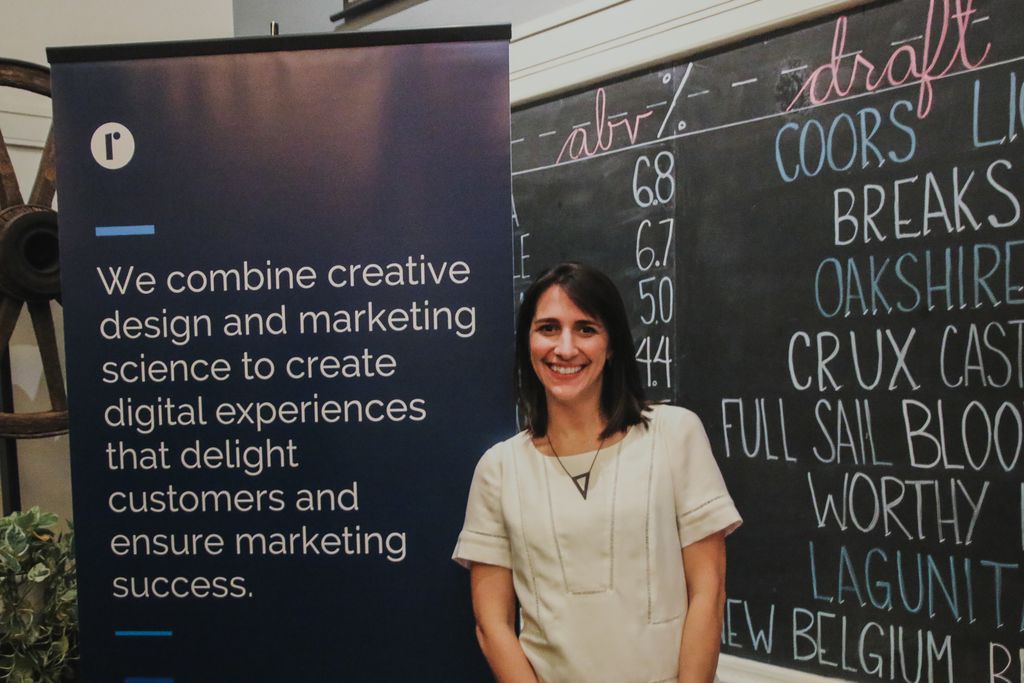Go Back
On January 18th, roboboogie had the pleasure of hosting Kim Toomey of Lytics as she spoke at Camp Optimization on the importance of personalizing your marketing efforts. Kim unpacked the history of personalization, the role it plays in decision making and provided some simple tactics to start personalizing digital experiences immediately. The talk was fun, engaging and informative and post-talk Q&A conversation was lively and challenging. Unable to join us this month? Don’t worry – we’re here to highlight a few key takeaways from our bi-monthly event.

Introducting Kim Toomey
Before we dive into what personalization really entails, here’s a brief background on Camp-O’s speaker, Kim Toomey, and the marketing platform, Lytics. Kim has been working in the agency realm for 10 years now, and has built out an impressive portfolio. Her experience extends all the way from SEO work to landing page design, and hits almost everything in between. Kim now finds herself in the role of Customer Success Manager at Lytics, a company that offers an advanced customer data platform (CDP). Our friends at Lytics provide an excellent service, and as a bonus they are located right here in sunny Portland, Oregon.

Why Personalize?
Personalization seems to be a hot trend in the marketing world, but is it here to stay? You bet! Here at roboboogie, we are firm believers in the positive effect of personalization and we have data to back it up. Effective personalization always takes a user’s best interest to mind and delivers an exceptional experience – that also has a strong measurable impact on ROI. There may come a time when there is too much personalization, but fortunately we’ve yet to cross this road. However, it is important to keep these potential barriers in mind as you look to serve your customers. It’s our belief that personalization shouldn’t extend so far that you compromise your brand just to serve a specific clientele. Fortunately, we are at the forefront of this trend, as companies continue to adopt and recognize the power of personalization. Not only does it open optimization opportunities, but it also makes the user feel like an individual and adds a level of humanity to our often automated world.
Harnessing Customer Data
Kim discussed the edge creating customer profiles gives your business by utilizing a customer data platform (like Lytics), and the effects it has on maximizing marketing spend. Knowing your customer and using your data to best serve their needs is critical to boost conversions. But, before we go any further, let’s provide some context on what goes into customer profiles. Profiles can be created from a large spectrum of detail, but the principle is to collect relevant user information and use this information to guide your content. Customer data platforms can be as simple as collecting demographic info and the acquisition channel, but can get as detailed as including session navigation paths, previous site interactions, checkout-flow history, and related demographic trends. Hopefully an example will provide some essential context here, but don’t worry, I’ll keep it simple. Let’s say there is an on-site promotion for new customers to receive free shipping on their first order, but this ad is displayed to every user who navigates to the site, new or returning. Clearly, if a user has already purchased, they would likely react unfavorably to seeing an unredeemable promotion. However, if a customer data profile is in place, the returning user would be served a unique site variation with user-specific information. The last thing you want is to upset a repeat customer, and if a CDP is in place this will ensure your site is serving the most relevant information for each user.

Expected Results
You’re probably thinking, “this is all great, but is it worth both the time and monetary investment?” The Lytics team seems to think so, and here at roboboogie we are all-in as well. One direct result of adopting user-specific personalization starts with a significantly decreased cost per acquisition. Think about it: if you can segment and target your ideal customer, then focus on the needs of this demographic for conversions, intuition would say your conversions should go up. Let’s say your marketing efforts are only converting 10% of users who see your content. Wouldn’t it make sense to focus on those converting to optimize their user experience? Once you’ve optimized their experience, the next step is building out more customer profiles and attracting others that show similar behaviors.

Where do I start?
This can sometimes be the most challenging part of any new venture. We’ve found going into the unknown with a positive mentality helps increase the odds of success. One practice we love is that of frequent, iterative testing, and always remembering to harness learnings from any missteps to inform strategy moving forward. With personalization, it’s important to keep in mind that not everyone will convert. Personalizing your marketing efforts doesn’t result in 100% conversion, but with the right tactics, you’re likely to see a boost in both conversions and ROI. A great jumping-off point into personalization is A/B and MVT testing. A personal staple of roboboogie’s and Lytics’ culture alike. Testing provides a clear path to let the numbers guide any decision around creating and optimizing personalized experiences. We can attest to the power of testing, and it serves as a solid foundation for entering the world of personalization. If you have any questions about personalization or you’re like us and share a similar passion for anything marketing related, be sure to get in touch!

Join us next time!
If you’re kicking yourself for missing out on Kim’s presentation, don’t! We’ve got something awesome in the works for our next installment of Camp Optimization on March 15th. Our very own Lacie Webb will be diving into the topic of Design Thinking, and the impact it has on optimization projects. Reserve your spot, mark your calendars, and if you’re like me and could use a friendly reminder, be sure to sign up for our newsletter below.
Written by Tyler Hudson.


